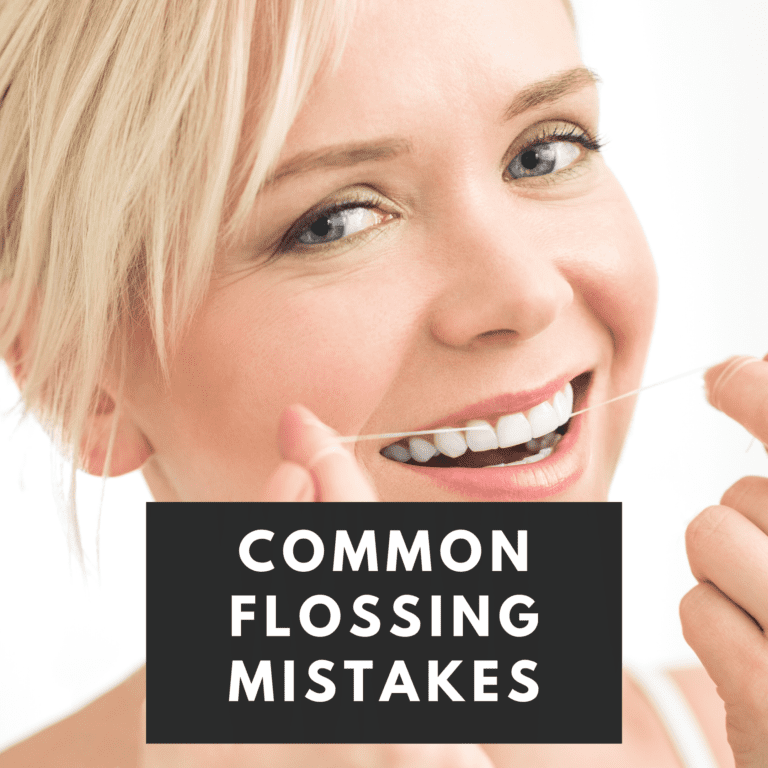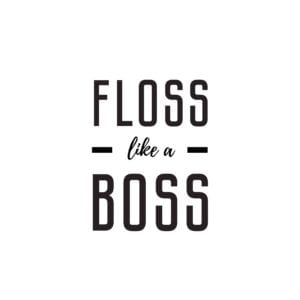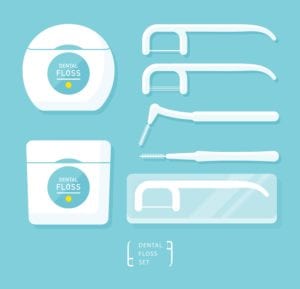Common Flossing Mistakes

Last month, we covered some of the most common mistakes made while toothbrushing. Brushing your teeth is a part of your daily oral hygiene routine and should be completed at least twice a day for two minutes at a time. However, brushing your teeth is not the only way to keep your teeth clean. In addition to brushing your teeth, your dentist also recommends flossing at least once a day. Similarly to toothbrushing, there are also some common mistakes that you may be making while you floss your teeth, including:

Skipping out on Flossing
There are three kinds of people: those who floss daily, those who floss occasionally, and those who don’t floss. Unfortunately, those who floss daily account for the least amount of people. There are various reasons why people don’t floss regularly, such as they forget or they believe it takes too much time. If you are the forgetful type, try leaving a note on your mirror or next to your toothbrush. If you feel that you don’t have enough time, set aside some time to perfect your technique so that it goes faster.
Being Too Enthusiastic About Flossing
In rare cases, there are some daily flossers who are probably too enthusiastic about flossing. This enthusiasm can either take the form of roughly flossing the teeth or flossing too many times a day. Both flossing too hard or too many times in a day can do more harm than good and can result in additional gum irritation. For this reason, it is only recommended to floss once a day using a gentle technique.
Hitting Your Gums
Some people don’t like to floss because it irritates their gums and/or causes them to bleed. In these cases, this often means that the floss is being used in such a way that it puts pressure on the gums. Constantly applying pressure to the gums while flossing can cause gum irritation that can eventually cause the gums to recede. The good news is that gum irritation can be prevented by altering your technique. To prevent gum irritation, floss your upper teeth using downward strokes and your lower teeth using upward strokes. This moves the floss away from your gums and prevents irritation.
Forgetting Key Areas
When flossing, you need to be sure that you are also cleaning the sides of your teeth, not just between them. It is also important to floss behind your last molar to remove debris from between the tooth and the gum. Finally, if you have any dental appliances or restorations, you will also need to floss around them as well. In some cases, this may require that you get a special type of floss that is made for this.

Not Using the Right Type of Floss
There are different types of dental floss and not all floss is the same. Some are created to work well for tightly spaced teeth, while others may work better for gapped teeth. In order to make the most of your flossing routine, it is important to find out what type of floss works best for your smile.
Not Flossing at the Right Time
There is actually a right time that you should be flossing, specifically at night just before bedtime. This is because your teeth and gums are most susceptible to bacteria at night when saliva levels decrease as you sleep. Therefore, it is important to remove as much bacteria as possible before going to bed. Additionally, it is also recommended that you floss your teeth before you brush them so that the fluoride from toothpaste can coat the areas in between your teeth easier.






Recent Comments